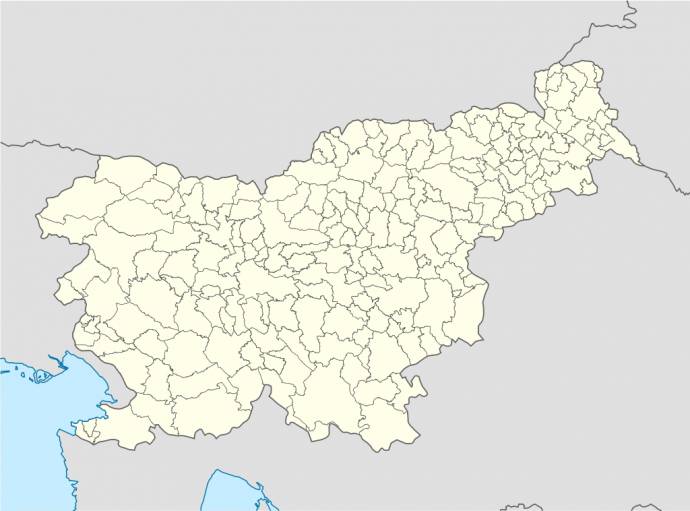STA, 12 November 2018 - Municipalities in Slovenia are obliged by law to provide a range of public services to residents. However, funding is often a tough task causing friction in relations with the government, which provides a considerable amount of money for municipal budgets.
All of the country's 212 municipalities must provide services such as day-care for pre-school children, primary school, primary healthcare and social services.
They are also obliged to manage local transport infrastructure, and provide utility, firefighting and environmental protection services.
They have to make sure that their local government institutions - from the city council and mayor to the city administration - carry out their tasks duly.
To provide all these services, which are generally set down in the local government law, municipalities receive funds from the state.
These funds are known as "povprečnina" and were introduced with the new local government act as of 2007. Their main source is personal income tax.
€573.5 state funding per capita
The amount a municipality receives a year is calculated as an annual lump sum per capita and transferred from the state budget.
It is calculated by the Finance Ministry on the basis of the average cost per capita the municipalities have spent in the past four years to provide their services.
The government and the municipalities have just recently reached a deal on the per capita budget transfer for 2019, meeting half way at EUR 573.5.
Robert Smrdelj, who heads one of the three municipal associations, says this is 20 euros higher than this year but still 35 euros below the projected costs for 2019.
Municipalities underfunded since the last financial crisis
Ever since 2011, municipalities have received lower budget transfers than they are legally entitled to.
Apart from the per capita budget transfer, municipalities expect the state to provide the funds for higher wages which are currently subject to public sector talks.
Although "povprečnina" is the main source of revenue, municipalities are also funded from other own sources.
They for instance collect a property tax known as the compensation for the use of building land, tourist tax, inheritance tax, and various fines.
Not insignificantly, they are also entitled to concession fees for the use of public good in their municipality or the tax on lottery prizes of their residents.
Nevertheless, municipalities and experts have been warning about insufficient funds, especially since they were cut during the crisis to fall below the guaranteed sum, while at the same time new tasks are being transferred onto them.
This makes funding extremely difficult, affecting especially new investments and infrastructure maintenance, posing a risk to the country's balanced development.
As municipalities carry out a number of infrastructure projects with the help of EU cohesion funds, they also fear they will not be able to secure the required share of own funds.
Boštjan Brezovnik from the Maribor Faculty of Law says municipalities are the founders of almost 1,100 public institutions which employ more than 60,000 workers, and can issue more than 1,200 different types of administrative decisions.
He says that many of their tasks are also set down or specified in laws governing individual fields, such as zoning or infrastructure construction.
Small municipalities must provide the same services as large ones
They manage municipal property, take care of water systems, energy and utility objects and local sport infrastructure. Some are also in charge of air, water and soil quality as well as of waste management, he explains.
Municipalities differ greatly in the number of residents, but they are all obliged to provide all the services practically on an equal footing.
Brezovnik says "Slovenian law does not distinguish between small and large municipalities", noting that small municipalities with few civil servants are unable to carry out all of the allocated tasks.
"For instance, the smallest municipality, Hodoš, with 376 residents, and Ljubljana as the largest one with almost 290,000 residents, have equal powers and tasks."
To cut their costs, municipalities have joined forces as part of "joint municipal administrations", which carry out certain tasks for multiple municipalities. In 2017, there were 52 such administrations, with all but 10 municipalities taking part.
Nevertheless, some municipalities are heavily indebted, although total municipal debt, which rose during the crisis, dropped for the third year in a row in 2017.
According to a Finance Ministry report, their debt was at almost 842 million euro at the end of last year, down 0.3% from 2016, but more than double what it was a decade ago.
At the end of last year, only 16 municipalities had no debt, but these are mostly small municipalities.
In absolute terms, large municipalities have the biggest debt burdens, not least because they carry out the biggest investments.
Ljubljana has €624 debt per capita
For example, Ljubljana had the highest debt at the end of December - EUR 171m, followed by Maribor and Koper with EUR 63m and EUR 46m, respectively.
However, calculated per capita, large municipalities are often less indebted than smaller ones, which is also true for Ljubljana.
Its debt per capita was EUR 624, which made it one of the less indebted municipalities when the average per capita debt stood at EUR 408 in 2017, the report says.
Overall, municipal debt is not seen as a cause of concern, with the exception of a few municipalities which have had their accounts blocked for several years due to overdue debt from the past.
All our local election coverage can be found here







